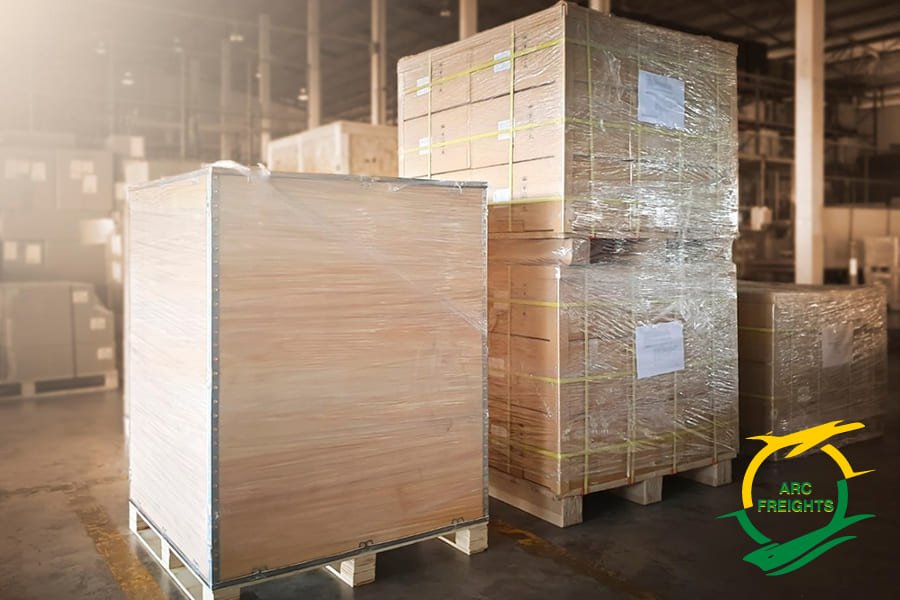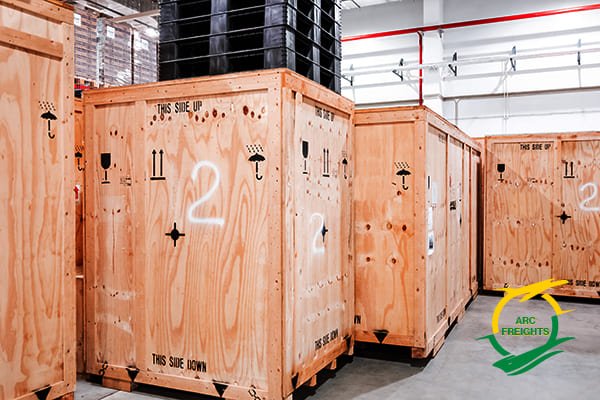Sea Freight Packaging Standards

Packaging standards for sea freight help businesses avoid costly delays, damage, and fines. This guide explains the key standards and practices you need to know.
Key Regulations and Industry Standards
Sea freight packaging standards come in two forms: mandatory regulations and industry practices. Both are critical for a successful shipment.
Mandatory Regulations
Local authorities at ports worldwide (Australia included) enforce these international rules. If you fail to comply, your cargo may be held, fined, or rejected.
- ISPM 15 for Wood Packaging
- The International Standard for Phytosanitary Measures No. 15 (ISPM 15) is a vital global protocol created to prevent the spread of pests in solid wood packaging. All solid wood packaging, like pallets and crates, must be treated with heat or fumigation. After treatment, the wood must be stamped with an official mark. This rule does not apply to processed wood like plywood.
- IMDG Code for Hazardous Materials
- The IMDG Code is the global standard for shipping dangerous goods by sea. This applies to chemicals, batteries, and even common items like aerosols and perfumes. Packaging for these goods must meet strict UN design standards and display the correct hazard labels.
- Further Reading: What Is An MSDS?
Industry Best Practices
These standards are not legally required, but they are the industry’s benchmark for quality. Carriers and insurers often use them when assessing damage claims.
- Standards Australia
- Standards Australia offers helpful local guidance. For example, the AS 4068 standard gives detailed specifications for flat pallets. Use these details to guide your packaging and handling.
- ASTM International
- ASTM International publishes global standards for shipping container construction. These standards provide a reliable measure of durability and performance.
Packaging Material Requirements
Your packaging materials must be able to withstand the harsh ocean transport conditions.
- Strength and Durability
- Packaging must be strong enough to support the weight of other cargo stacked upon it.
- Moisture Protection
- To protect sensitive goods from humidity, use water-resistant materials, internal liners, or desiccants. This is often the case in cold chain logistics, where the need for temperature and humidity control is paramount.
- Shock Absorption
- Use cushioning to shield products from vibrations and impacts during handling and transit.
Common Packaging Methods

- Corrugated Boxes (Cartons)
- Cartons are a versatile choice for light to medium-weight goods. Use high-quality boxes that are rated for your cargo’s weight. ill any empty space to prevent movement, and seal the box with heavy-duty tape.
- Wooden Boxes and Crates
- For heavy, valuable, or delicate equipment, wooden crates offer superior protection. They should be built to industry standards, with the contents braced securely to prevent any movement.
- Pallets
- Pallets are the most common way to unitize cargo for efficient handling. Stack your goods squarely with the heaviest items on the bottom. Then, secure the entire load tightly with stretch wrap and strapping.
- Bags and Sacks
- When shipping bulk goods or powders, use durable, puncture-resistant bags. Seal them well to prevent leaks.
Labeling and Marking Requirements

Clear and accurate markings allow cargo to be identified and handled properly.
- Shipping Marks
- Mark every package legibly with the consignee’s name, the port of discharge, and its unique shipment number (e.g., “1 of 10”).
- Informational Marks
- Mark each package clearly with its gross and net weight, country of origin, and external dimensions.
- Handling Marks
- Use standard pictorial symbols for handling needs. Examples include the wine glass for “Fragile,” upward arrows for “This Way Up,” and an umbrella for “Keep Dry.”
Load Planning and Weight Specifications
Proper load planning is essential for safe and cost-effective sea freight shipments. A well-organized load maximizes space, prevents cargo from shifting, and reduces the risk of damage. When arranging your cargo, focus on both the layout and the individual weight of each package. Make sure that each package is within the safe lifting capacity of the equipment used at ports and warehouses. Excessively heavy packages that can’t be safely moved will be rejected.
Special Cargo Packaging
Certain goods have specific needs that require solutions beyond standard packaging protocols.
- Liquid Goods
- Leave 5-10% empty space (ullage) in liquid containers to allow for thermal expansion. Their lids must be sealed tightly and reinforced to remain leak-proof.
- Powdered Goods
- Package powdered goods in sift-proof containers or bags to prevent product loss during transit.
- Dangerous Goods
- The packaging for any hazardous substance must strictly follow the detailed regulations in the IMDG Code. Expert guidance is often required here.
Freight Forwarding

The regulations for sea freight packaging are detailed and can be quite complex. An experienced freight forwarder serves as an essential partner for navigating these requirements effectively. A reliable forwarder will:
- Offer guidance on the most appropriate materials and methods for specific products.
- Help ensure that packaging is compliant with all mandatory rules like ISPM 15.
- Provide essential customs clearance This includes assisting in managing the necessary documentation to prevent customs holds and fines.
- Coordinate the entire logistics chain so that goods travel securely to their final destination.
Engaging a forwarder is a practical measure for managing risk and preventing costly disruptions. It is always advisable to consult with them before shipping to confirm that all requirements have been fully met.
Conclusion
Proper packaging is crucial in sea freight to ensure the safety of your goods and meet regulations. Failing to meet standards can lead to damages, fines, or rejected shipments. This guide covers the essentials, but effective implementation requires experience. A freight forwarder can help navigate these challenges, ensuring your cargo is packed securely and meets all regulations. By working with experts, you can avoid delays and ensure your goods arrive on time.
Arc Freights is Australia’s leading Freight Forwarder offering QUALITY & RELIABLE logistics services in more than 140 countries. Having plied our expertise in ASEAN for nearly two decades, we are the trusted partner for logistics between Australia and Brunei, Cambodia, Indonesia, Laos, Malaysia, Myanmar, Philippines, Singapore, Thailand, and Vietnam. With expert knowledge, advanced technology, and a commitment to reliability, we provide seamless logistics management, including door-to-door sea freight services, that helps you focus on what matters most—growing your business.
